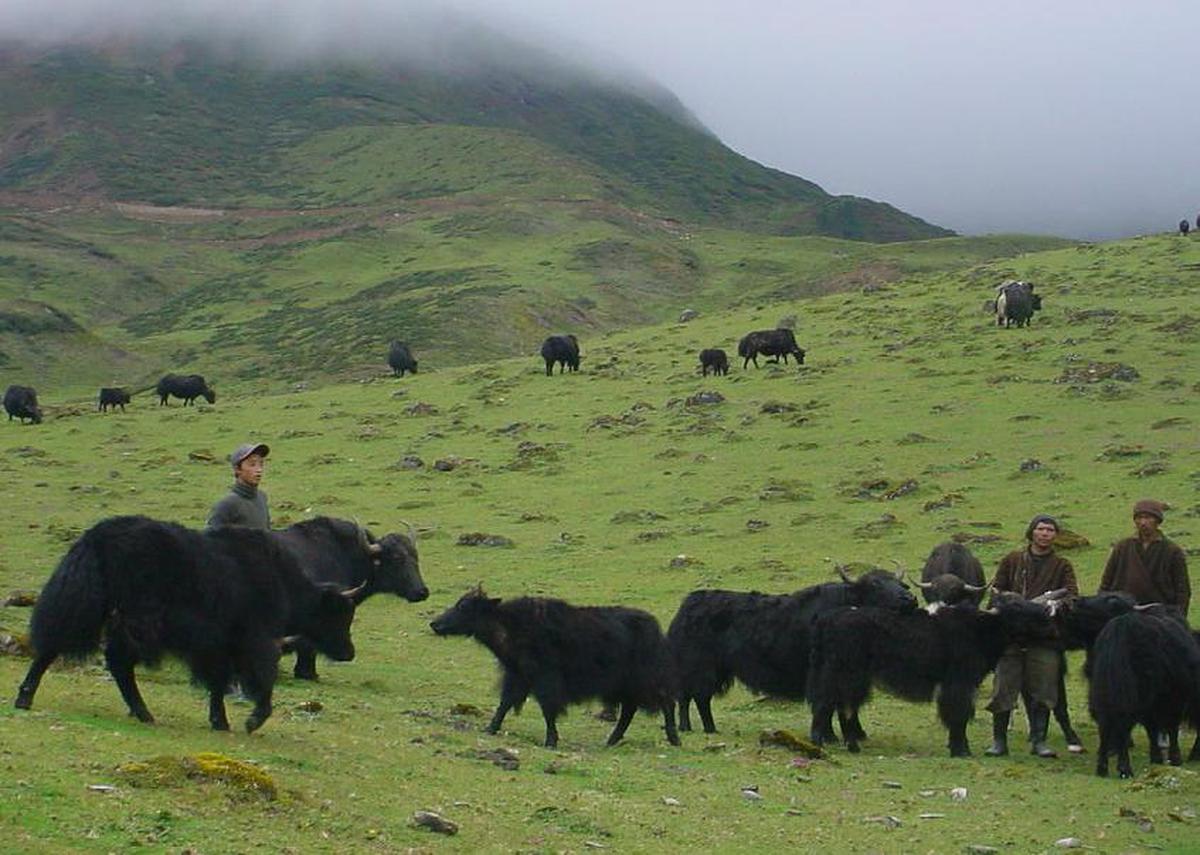GUWAHATI
The Himalayan yak has earned the food animal tag from the Food Safety and Standard Authority of India (FSSAI).
The categorisation is expected to help check the decline in the population of the high-altitude bovine animal by making it a part of the conventional milk and meat industry.
Mihir Sarkar, the director of the National Research Centre on Yak (NRC-Y) based in Arunachal Pradesh’s Dirang, said his institution had submitted a proposal to the FSSAI in 2021 for considering the yak as a food animal.
The FSSAI responded with an official approval a few days ago after a recommendation from the Department of Animal Husbandry and Dairying.
“The yak plays a multidimensional socio-cultural-economic role for the pastoral nomads who rear it mainly for earning their nutritional and livelihood security due to the lack of other agricultural activity in the higher reaches of the Himalayan region where it is difficult for animals except the yak to survive,” Mr. Sarkar said.

Himalayan nomads rearing the animal.
| Photo Credit:
Special Arrangement
Yaks are traditionally reared under a transhumance system which is primitive, unorganised and full of hardship. But the yak population in the country has been decreasing at an alarming rate, data provided by the NRC-Y said.
According to a census carried out in 2019, India has some 58,000 yaks – a drop of about 25% from the last livestock census conducted in 2012. Apart from the government and the local users, the drastic drop in the yak’s number has become a major cause of concern for animal genetic diversity conservationists.
The drastic decline in yak population could be attributed to less remuneration from the bovid, discouraging the younger generations from continuing with nomadic yak rearing. It is mainly because yak milk and meat are not a part of the conventional dairy and meat industry, their sale is limited to local consumers.
NRC-Y scientists believe the commercialisation of yak milk and meat products will lead to entrepreneurship development. But for that the yak has to be included as a food producing (milk and meat) animal in the Food Safety and Standards Regulation, 2011, they said.
“The FSSAI’s recognition will help farmers rear the yak economically and open up several vistas of economic benefits for both farmers and food processors,” Mr. Sarkar said.
Nutrient-loaded
Research at the NRC-Y has revealed yak milk is highly nutritious, rich in fat, contains essential minerals and has medicinal values. According to the nutritional analysis, yak milk contains 78-82% water, 7.5-8.5% fat, 4.9-5.3% protein, 4.5-5.0% lactose and 12.3-13.4% solids-not-fat. The products which are traditionally produced from yak milk are churkum, churpi, ghee and paneer.
Mostly consumed locally, yak meat is known to be lean. The meat contains 74.8% moisture, 21.7% protein, 1.5% crude fat and 1.2% ash.
Specialists said yak husbandry needs to be more remunerative for attracting the younger generations.
“NRC-Yak has developed a semi-intensive model of yak-rearing in which yaks are maintained in an open area as well as in paddock round the year. Now that the yak is a food animal, this model can go a long way in making yak-rearing a commercial success,” Mr. Sarkar said.



